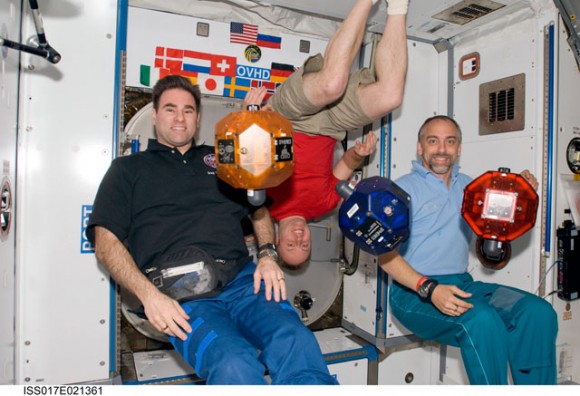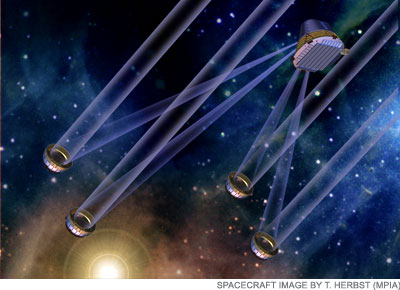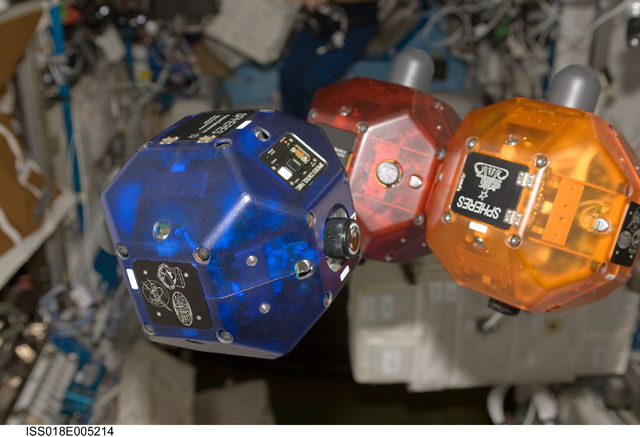[/caption]
Three free-flying spheres are currently zooming around inside the International Space Station. Is the crew of Expedition 18 using them to hone their light-saber battle skills a la Luke Skywalker or sharpen their ability to detect UFOs? No, these bowling-ball sized spherical satellites are part of an experiment devised by students at the Massachusetts Institute of Technology (MIT) to test autonomous rendezvous and docking maneuvers for future formation flying spacecraft. Called SPHERES – which stands for Synchronized Position Hold, Engage, Reorient, Experimental Satellites — these color-coded robots are flying inside the ISS, testing different flight formations. But these have to be a lot of fun to play with during off hours on the space station: zero-g bowling or space volleyball, anyone?

Each satellite is self-contained with power, propulsion, computers and navigation equipment. The results are important for satellite servicing, vehicle assembly and formation flying spacecraft configurations. One future formation flying mission is the Terrestrial Planet Finder Interferometer, which will use multiple small vehicles flying in formation to create an orbiting infrared interferometer.

If successful, these mini-satellites, and their potentially larger versions, would be able to refuel/repair other satellites, establish positioning around space-based telescopes, and support space docking routines. So, battle droids would become maintenance droids.
And smaller, multiple satellite missions are economical and provide redundancy. Instead of launching one big, heavy satellite, launching lots of little is easier. They can orbit Earth in tandem, each doing their own small part of the overall mission. If a solar flare zaps one satellite—no problem. The rest can close ranks and carry on. Launch costs are reduced, too, because tiny satellites can hitch a ride inside larger payloads, getting to space almost free of charge.
The SPHERES can also test the ability to build spaceships in orbit. One way to build a larger ship to go to, for instance, Mars, is to assemble it piece by piece in Earth orbit. The SPHERES are helping engineers design software that could be used to maneuver the pieces of a spaceship together.
Sources: Science@NASA, NASA, MIT


ah, Cute
they could also have much space military potential in the future if fitted with explosives.
great idea though
R2D2, here we come!
This would be soooo cool!!!! hope it works!!!
Now Thats Cool !!!!!!!!!!!
about russian brides dating all information – Atom russian brides dating
about russian brides datingall information – Atom
singles usa
singles usa